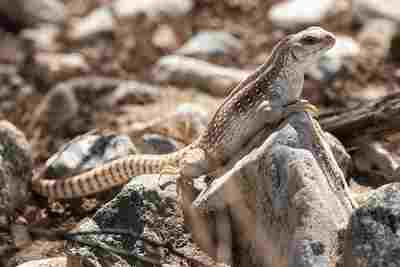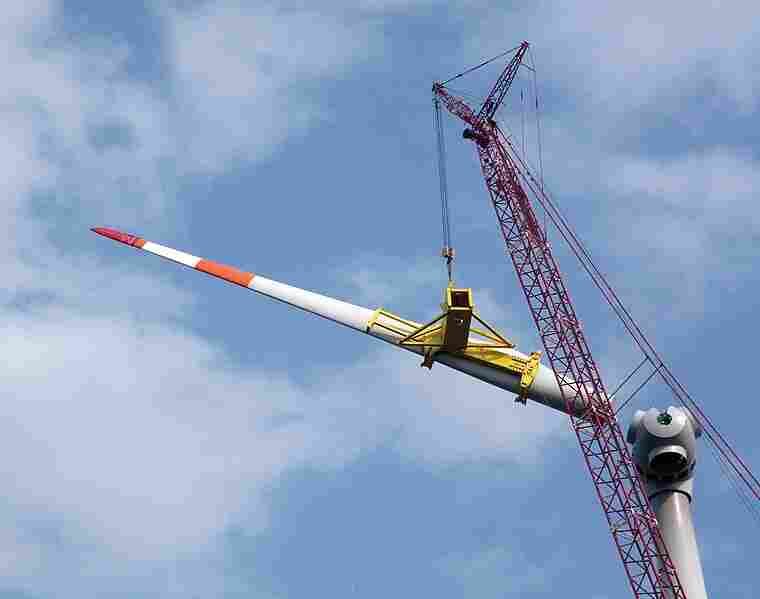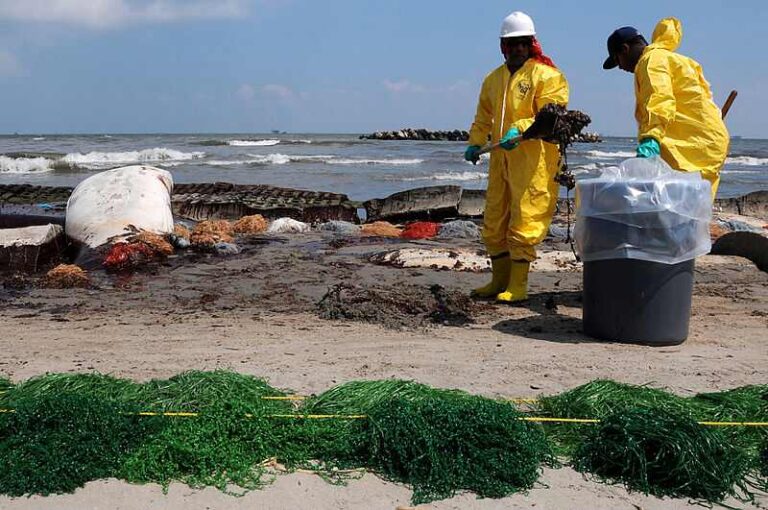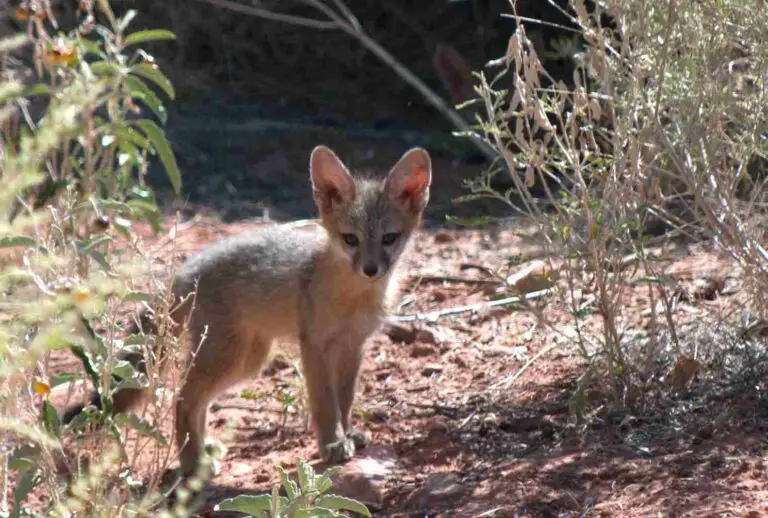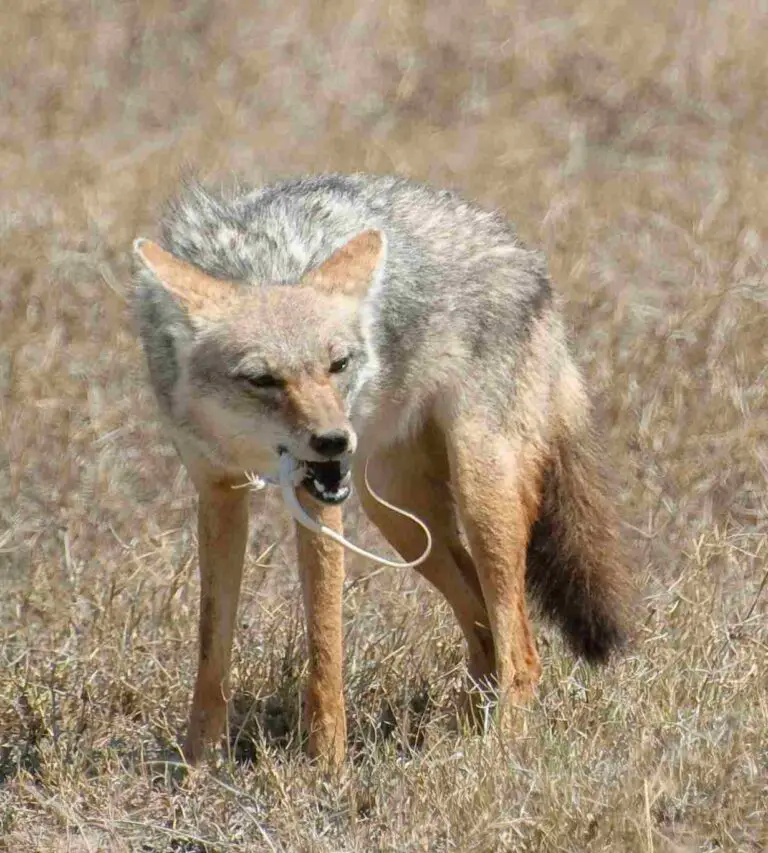7 Mojave Desert Abiotic Factors Discussed
Mojave Desert abiotic factors are; light, water, wind, sediments, rocks, nutrients, and physicochemical conditions.
This article discusses Mojave Desert abiotic factors, their relevance and functions, as follows;
1). Light: as One of the Mojave Desert Abiotic Factors
Light is one of the crucial abiotic factors in the Mojave Desert, significantly impacting the desert ecosystem's structure and functioning.
The Mojave Desert, known for its intense sunlight and clear skies, experiences high levels of solar radiation. This light has a pivotal role to play in shaping the distribution, behavior, and adaptations of flora and fauna within the region.
Relevance and Functions of Light in the Mojave Desert
Factors that highlight the relevance and functions of light in the Mojave Desert include; primary energy resource, plant adaptations, diurnal activity, thermoregulation, habitat selection, seed germination, and predator-prey dynamics.
Sunlight functions as the primary energy source for the Mojave Desert ecosystem. It drives photosynthesis in plants, whereby solar energy is converted into chemical bioenergy stored in carbohydrates (biomass). Photosynthesis forms the trophic foundation of the desert's food web.
Due to the high solar radiation, many plant species have evolved unique adaptations which enable them to cope with intense light energy. Examples of such adaptations include reduced leaf surface area to minimize water loss through transpiration, thick waxy cuticles also for water conservation, and structural succulence.

Light regulates the diurnal activity patterns of several desert animals. In order to avoid extreme heat during the day, many species are crepuscular or nocturnal, becoming active during the cooler hours of dawn and dusk. Nocturnal behavior helps them to conserve water and avoid predators.
Also, light is accompanied by solar infrared radiation which influences the thermal environment of the Mojave Desert. During the day, the desert is subjected to high temperatures, and the direct sunlight warms the environment. Species have evolved diverse thermoregulation strategies to manage their body temperatures, which include seeking shade during the hottest hours.
The intensity of light in the desert affects habitat selection. Some species prefer shady, rocky outcrops to escape direct sunlight, while others burrow into the ground in order to avoid extreme temperatures. Specific adaptations for heat tolerance or aversion are also occurrent.
Light is essential for triggering the germination of specific desert plant seeds. In some cases, light exposure is necessary for breaking the dormancy of seeds, thereby enabling seeds to sprout and grow.
The intensity and availability of light influences visibility, which, in turn, affects predator-prey interactions. Predators that rely on visual cues may be more successful while hunting during the day, while prey species may use darkness for protection.
Specific Estimates of Light Availability in the Mojave Desert
Estimates of light availability in the Mojave Desert can be with respect to intensity, daily duration, and ultraviolet effects.
The Mojave Desert receives high levels of solar radiation, with an average of around 6-7 kWh/m² per day. The amount of solar radiation varies both seasonally and with geographic location within the desert.
Daylight hours in the Mojave Desert also vary throughout the year. In the summer, there are approximately 14-15 hours of daylight, while in the winter, this may reduce to 9-10 hours.
The desert is known for its high levels of ultraviolet (UV) radiation, which can influence both the behavioral and physiological adaptations of desert organisms. Specific measurements of UV radiation levels may vary, but often exceed 10 UV index units.
2). Water
Water is arguably the most critical abiotic factor in the Mojave Desert. This arid region, characterized by low annual precipitation and high rates of evaporation, is known for its limited water resources. Water scarcity profoundly influences the structure, composition, and biotic processes of the desert ecosystem, defining the distribution, adaptations, as well as survival strategies of its inhabitants.
Relevance and Functions of Water in the Mojave Desert
Relevance and functions of water in the Mojave Desert can be discussed within various contexts including; limited precipitation, plant adaptations, resource for wildlife, migration and seasonal activity, heat mitigation, predator-prey interactions, and human impact.
The Mojave Desert receives an average of 4-6 inches (100-150 mm) of annual precipitation, which is considerably low. Rainfall is highly variable, both seasonally and geographically within the desert. The scarcity of precipitation creates drought-susceptibility and water stress that affects all living organisms.
Water is often the primary limiting factor for plant growth and distribution in the Mojave Desert, along with other resources like nutrients. The distribution of plant species is closely tied to the availability of water, which can be accessed from underground aquifers through deep taproots, or by growing near natural water sources.
Several desert plants have evolved distinctive adaptations that help them to minimize water loss. These adaptations include succulence, small or absent leaves, thick waxy cuticles, and deep roots to access groundwater. Some plants are drought deciduous, and capable of shedding leaves during dry periods to conserve water.
Water sources, such as natural springs, seeps, and other isolated watering holes, are essential for wildlife in the desert. They serve as critical drinking sources for a variety of animals, which include mammals, birds, and reptiles. Biodiversity often centers around these oases.
Availability of water plays a prominent role in the timing of migration and seasonal activity for both resident and migratory desert species. Some animals may migrate in search of water, while others time their reproduction and feeding patterns in line with the arrival of seasonal rainfall.
Adjacent water sources, including riparian areas and wetlands, can moderate temperatures in the desert landscape. They provide cooler microclimates that are important for both fauna and flora, especially during the scorching summer months.
Water sources can also become focal points for predator-prey interactions. Carnivores may patrol these areas to ambush herbivores coming to drink, leading to a dense concentration of both predator and prey species.
Human activities, such as urban development, infrastructure installation, and water extraction, can significantly impact the distribution of water in the desert. These activities can disrupt natural ecosystems and the organisms that depend on these water sources.
Specific Estimates of Water Availability in the Mojave Desert
Water availability and dynamics in the Mojave Desert can be assessed in terms of annual precipitation, groundwater depth, springs and seeps.
The Mojave Desert receives an annual precipitation of about 4-6 inches (100-150 mm), with significant variations from one area to another.
The depth of groundwater varies within the desert, and some plants possess adaptations that enable them to access deeper water resources. The depth of the water table can range from shallow in some areas to several hundred feet below the surface in others.
Natural springs and seeps, though rare, serve as vital water sources. The flow rate can vary from a few liters per minute to more significant flows, depending on the specific spring.
3). Wind: as One of the Mojave Desert Abiotic Factors
The relevance and functions of wind currents in the Mojave Desert, can be assessed in terms of; erosion and sedimentation, seed dispersal, pollination, temperature regulation, dust storms, water loss and drying, as well as geological features.
Wind is a powerful force in arid environments like the Mojave Desert. It can act as an agent of erosion by moving sand and other loose particles, thereby modifying the landscape over time. Wind-driven sedimentation can create dunes and sand sheets, which are characteristic features of desert ecosystems.
Another function of wind is the dispersal of seeds. Many desert plants have adaptive features that allow their seeds to be carried by the wind, thereby increasing the chances of germination in new areas. Wind dispersal promotes genetic diversity while contributing to the resilience of plant populations.
Wind is a significant instrument of pollination for certain desert plants. Plants that have small, inconspicuous flowers often rely on the wind to carry pollen from one flower to another. This adaptation ensures the continuity and success of reproduction in environments where insects, birds, or other traditional pollinators might be scarce.

Temperature regulation within the desert ecosystem is also affected by wind. During the day, wind can accelerate the rate of evaporation, which can have a notable cooling effect. At night, wind can increase heat loss from the surface, again contributing to cooler temperatures.
Strong winds in desert regions can cause the incidence of dust storms. These storms can transport vast amounts of sedimentary particles like dust and sand over long distances, affecting air quality, visibility, and even the health of humans in surrounding areas. Dust storms can also deposit nutrients over large zones, influencing soil composition.
Wind can exacerbate the process of water loss in desert environments. It accelerates the evaporation of moisture from the soil surface and plant leaves, thereby contributing to the overall dryness of the desert ecosystem. This can influence the water availability for both flora and fauna.
Lastly, wind can shape geological features in deserts over extended periods. It can erode rocks and create unique formations. Wind-shaped rocks, such as ventifacts (stones shaped by wind-blown sand), are common in desert landscapes.
Specific Estimates of Wind Dynamics in the Mojave Desert
Criteria that can be employed when estimating wind dynamics in the Mojave Desert include; wind speed and dust storm frequency.
Wind speeds in the Mojave Desert can vary widely, but average wind speeds range between 5 to 15 mph (8 to 24 km/h). However, gusts during storms or strong wind events can reach much higher speeds than this range, sometimes exceeding 50 mph (80 km/h).
Dust storms occur periodically, and especially under extreme dry, windy conditions. While there are no specific annual estimates for the Mojave Desert, dust storms can occur multiple times a year, during which they impact visibility and air quality.
4). Sediments
Sediments constitute an important abiotic factor in the Mojave Desert, whose relevance and functions can be evaluated based on soil formation, habitat provision for desert organisms, water filtration, plant growth, erosion and landscape shaping, archeological and geological significance, as well as nutrient cycling.
Relevance and Functions of Sediments in the Mojave Desert
A vital role is played by sediments in soil formation, within the Mojave Desert. Over time, agents of weathering and erosion like wind and water transport sediments that accumulate in various locations, where they contribute to the development of desert soils. These soils are often well-drained and able to support desert-adapted plant species.
Also, sediments provide habitat and refuge for various desert organisms. Many small mammals, reptiles, and insects burrow into the ground, and take advantage of the loose sediments to create tunnels for protection from extreme temperatures and predators.
Sediments can act as natural filters for water. When rain or rare flash flooding events occur in the Mojave Desert, sediments can help trap and filter impurities, allowing water to percolate into the ground. This filtration process can improve the quality of water resources for both plants and animals.
Desert plants have generally evolved to grow in sediments that may be rich in mineral nutrients. Some plants in the Mojave Desert, like creosote bush and Joshua tree, have deep root systems that can access moisture and nutrients from such sediments.
Sediments are essential components involved in the shaping of the desert landscape. Wind and water can transport sediments, leading to the formation of features such as sand dunes, alluvial fans, and desert pavements. These features have ecological significance and provide distinctive habitats for specialized plant and animal species.
The presence of sediments in the Mojave Desert has historical and geological significance. Archaeological sites are often preserved within sediment layers, and offer insights into the region's human history. Geologists also study desert sediments to understand past climatic conditions and geological events.
Sediments can contain essential nutrients such as phosphorus and potassium. These nutrients can be cycled through the ecosystem as sediments break down and weather. They may become available for plants, contributing to the geochemical recycling of resources within the ecosystem.
Specific Estimates of Sedimentary Dynamics in the Mojave Desert
Factors that can be used to analyze sedimentary dynamics in the Mojave Desert are; sediment composition, depth of deposits, and soil characteristics.
Sediments in the Mojave Desert consist of various materials, which include sand, silt, clay, gravel, and larger rocks. The proportions of these components can vary across different areas of the desert.
The depth of sedimentary deposits in the Mojave Desert can range from a few inches to several feet, depending on the location and geological history. For example, alluvial accumulations near mountainous zones may have thicker overburden and deeper deposits.
Mojave Desert soils typically have low organic matter content and are characterized by coarse textures. They are also well-drained, and allow water to percolate through the sediments.
5). Rocks: One of the Mojave Desert Abiotic Factors
In the Mojave Desert, rocks serve as habitat for organisms, instruments for heat absorption and radiation, substrate for plant anchorage, erosion control tools, natural water storage systems, and geological resources.
Rocks provide essential habitat structures for various desert organisms. Many reptiles, insects, and small mammals seek refuge under or between rocks which help them to escape extreme temperatures and predators. These rocky crevices usually offer protection and cooler microenvironments.


Owing to their distinctive thermal capacity, rocks in the Mojave Desert are able to absorb heat during the day and release it through radiative energy transfer at night. This diurnal temperature variation establishes microclimates that can be vital for desert organisms' survival. Cold-blooded animals such as reptiles use these rocks to thermoregulate, by basking in the sun during the day and retreating to the warm rocks at night.
Desert plants, such as creosote bushes, often grow among rock masses and even through rocky substrate. The rocks offer stability and protection against wind damage and erosion, enabling these plants to establish themselves in the harsh desert environment.
Rocks are effectively involved in controlling erosion by anchoring the soil in place. In a region prone to flash floods and intense windstorms, rocks help prevent excessive sediment transport and provide stability to desert slopes.
In a desert where water is scarce, rocks sometimes help store moisture. Porous rocks, such as sandstone, can retain water within their crevices, which may be accessible to plant roots or serve as a water source for small desert creatures.
Lastly, the rocks in the Mojave Desert have geological significance. They are representative of the complex geological history of the region, including processes such as sedimentation, uplift, and erosion. Geologists can study these rocks to better understand the Earth's past and the formation of desert landscapes.
Specific Estimates of Rock-Related Dynamics in the Mojave Desert
Estimative criteria for rocks in the Mojave Desert include; rock dynamics, rock size and density, mineral composition, and erosion patterns.
The Mojave Desert is home to a variety of rock types, which include sedimentary rocks (such as; sandstone, limestone), igneous rocks (like granite, basalt), and metamorphic rocks (including schist, gneiss). The specific types and proportions of rocks can vary depending on the location within the desert.
Size and density characteristics of rocks in the Mojave Desert vary widely. Small pebbles, boulders, and massive rock outcrops can be found throughout the landscape.
Rocks in the Mojave Desert may contain a diverse range of minerals, including quartz, feldspar, mica, and various trace elements. These minerals can influence the chemical composition of soils and water in the region.
Erosion processes in the Mojave Desert are influenced by the distribution and type of rocks. For example, sedimentary rocks erode differently from igneous rocks, leading to the formation of distinctive geological features.
6). Nutrients
It is possible to discuss the relevance and functions of nutrients in the Mojave Desert ecosystem, based on criteria like; plant growth, primary productivity, soil microorganisms, ecological resilience, symbiotic relationships, water-use efficiency, and carbon sequestration.
Nutrients are essential for plant growth within the Mojave Desert. While the desert soil is often nutrient-poor, the availability of sine key nutrients like nitrogen, phosphorus, and potassium influences the establishment and vitality of desert vegetation. Desert plants have adapted to efficiently utilize available nutrients.
Nutrient availability can directly affect primary productivity in the desert ecosystem. Increased nutrient concentration-levels can lead to higher production rates for plant biomass, which in turn supports herbivores, omnivores, and carnivorous consumers in the food web. Desert rodents, insects, and herbivorous reptiles all rely on nutrient-rich plants for their sustenance.
Also, nutrients support soil microorganisms in the Mojave Desert. These microorganisms are vital in their role, in nutrient cycling and the biodegradation of organic matter. They break down the remains of dead plants/animals and release nutrients back into the soil, contributing to plant nutrient uptake.
Nutrient cycling is highly important for achieving and sustaining ecological resilience in arid ecosystems like the Mojave Desert. The availability of nutrients can influence a desert ecosystem's ability to recover from disturbances such as wildfires or severe droughts. Nutrient cycling supports the renewal of plant growth after disturbances.
In the Mojave Desert, certain plants are known to form mutualistic relationships with mycorrhizal fungi, which aid them in nutrient uptake. These fungi extend the root systems of plants, and enhance their ability to absorb nutrients like phosphorus. Such mutualistic relationships are critical for many desert plants.
Availability of nutrients can also influence a plant's water-use efficiency. Some desert plants invest in nutrient-efficient strategies, which allow them to conserve water while acquiring necessary resources for survival.
Nutrient availability indirectly affects carbon sequestration processes in the desert ecosystem. As plants capture carbon dioxide through photosynthesis, they require essential nutrients for this process. Carbon is stored in plant tissues as well as soil organic matter.
Specific Estimates with Respect to Nutrient Dynamics in the Mojave Desert
Some factors that can be used to estimate nutrient-related quantities in the Mojave Desert are; soil nutrient content, cycling rates, plant adaptations, nutrient-plant relationships, and mycorrhizal associations.
The Mojave Desert soil is generally characterized by low nutrient content. Nitrogen, phosphorus, and potassium are typically present in limited quantities. Soil analyses may reveal specific nutrient levels and their availability for plants.
Rates at which nutrients are cycled through the ecosystem vary on the basis of factors like precipitation, temperature, and the presence of decomposers. Specific estimates of nutrient cycling rates can be obtained through ecological studies.
Desert plants have developed various adaptations for coping with nutrient limitations. These adaptations can be quantified and assessed in terms of nutrient-use efficiency and allocation strategies.
Ecological studies in the Mojave Desert may reveal the relationships that exist between nutrient availability and the distribution and abundance of plant species. Researchers may measure nutrient levels in soil and plant tissues to understand these relationships.
Specific studies can measure the prevalence and effectiveness of mycorrhizal associations between desert plants and fungi, especially in relation to trends of nutrient acquisition.
7). Physicochemical Conditions: One of the Mojave Desert Abiotic Factors
The relevance and functions of physicochemical conditions in the Mojave Desert can be analyzed in terms of variables like; temperature regulation, water availability, sunlight and photoperiod, soil composition, salinity and mineral deposits, air quality, wind currents, topography, and geochemical dynamics. These are discussed in the subsection below.
Relevance and Functions of Physicochemical Conditions in the Mojave Desert
Temperature is a critical abiotic factor in the Mojave Desert. Extreme temperature fluctuations, with scorching daytime heat and chilly nights, are quite common. Organisms in the desert have resultantly developed various adaptations to enable them cope with these temperature extremes, such as burrowing, sheltering during the hottest parts of the day, and nocturnal activity during the cooler nights.
Water is arguably the most influential abiotic factor in the Mojave Desert due to its scarcity. Plants and animals have evolved diverse strategies to survive in this arid, water-deficient environment. Water availability is highly instrumental in determining the spatial distribution and numerical abundance of species.
The intense sunlight in the Mojave Desert is a vital resource for photosynthesis, a process which is key for primary productivity. Many desert plants are able to maximize their exposure to sunlight while minimizing water loss. Photoperiod, or the length of day and night, also influences the behavioral patterns of diurnal and nocturnal desert species.
Physicochemical properties of soil, such as texture, pH, moisture content, and mineral composition, are important factors that affect plant growth and nutrient availability. Desert plants have evolved to grow in soils with low organic matter and significant mineral content.
Salt flats, saline soils, and mineral deposits can also be found in parts of the Mojave Desert. Some specialized plant species are adapted to tolerate high levels of salinity, while others accumulate minerals as part of their defense mechanisms.

In the absence of dust storms, the Mojave Desert's remote location often results in relatively optimal air quality compared to industrialized urban areas. Air quality can impact respiratory health in animals while influencing the distribution of sensitive plant species.
Wind is another important factor that can affect physicochemical conditions in the desert. It is also involved in the dispersal of seeds, as well as cooling, and shaping the landscape. Windblown sand can create unique landforms, such as dunes, and impact soil erosion and plant establishment trends.
The physical features of the landscape, including elevation, slopes, and valleys, influence microclimates and the distribution of plant and animal groups. For example, cooler temperatures may be found at higher elevations, along with organisms that are most intolerant of extreme heat.
Mojave Desert is known for its geological diversity. Geological processes significantly influence the availability of minerals and groundwater in this ecosystem. Certain rock formations may serve as aquifers, and provide water sources for plants and animals.
Specific Estimates with Respect to Physicochemical Conditions in the Mojave Desert
Some physicochemical variables that can be estimated to understand the conditions of the Mojave Desert are; temperature extremes, annual precipitation, sunlight exposure, soil characteristics, wind speeds, and salinity levels.
Daytime temperatures in the Mojave Desert can soar above 100°F (37.8°C) during the summer, while nighttime temperatures can drop to around 30-40°F (-1 to 4.4°C).
The Mojave Desert receives limited annual precipitation, with an estimated average that ranges from 3 to 10 inches (76 to 254 mm) per year. Precipitation patterns can vary, influencing desert flora and fauna.
An average of over 300 sunny days per year occurs in the Mojave Desert, with extended periods of intense sunlight. Photoperiods can range from around 10 hours of daylight during the winter to over 14 hours in the summer.
Soil in the Mojave Desert is typically characterized by low organic matter content and alkaline pH values. Mineral composition varies but often includes minerals like calcium carbonate.
Wind speeds in the Mojave Desert can also vary, with typical averages ranging from 5 to 15 mph (8 to 24 km/h), depending on the location and time of year.
Lastly, some areas in the Mojave Desert have saline soils with high salt concentrations, which impact the types of plants that can grow there.
Conclusion
Mojave Desert abiotic factors are;
1. Light
2. Water
3. Wind
4. Sediments
5. Rocks
6. Nutrients
7. Physicochemical Conditions
